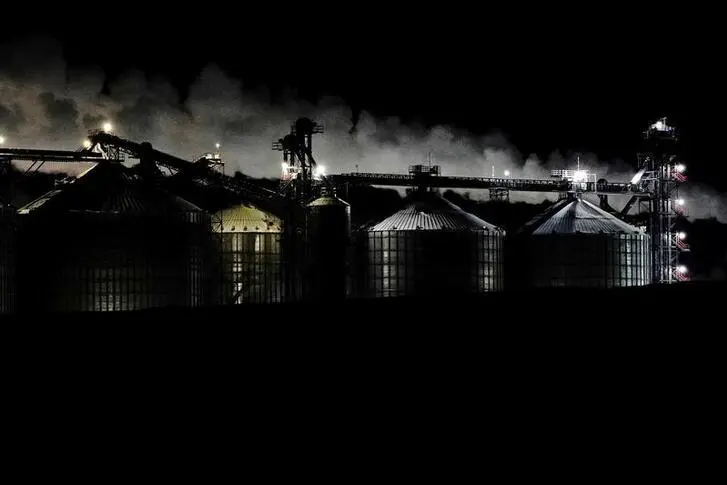PHOTO
FORT COLLINS, Colo. - U.S. corn-based ethanol production over the last year or so has been more of a drag than a support on grain markets as demand and world economies continue to claw back from the coronavirus slump.
Now, with global energy prices at seven-year highs and gasoline consumption improving, profit margins for U.S. ethanol producers have surged, lifting output near record highs.
The risk of strong production is that stockpiles could build excessively without equally robust demand, though so far that has not been the case. An increase in lagging exports could help balance any extended rise in output, though two of the United States’ top customers have been less active.
U.S. ethanol production last week reached 1.106 million barrels per day, the second-best for any week on record and the second consecutive week of top-level output. The recent production rate is more than 10% above the late-summer downturn.
Despite the production boost, stocks have mostly maintained over the last month, drifting less than 1% lower in the latest week to 19.9 million barrels. That is slightly above year-ago levels on the same date but well below those from the three prior years.
Although only about 10% of U.S. ethanol output is exported each year, trade has recently been a sore spot for the industry. Shipments through the first eight months of the year reached 3 billion liters (796 million gallons), down 10% from last year and the lowest for the period in five years.
Brazil is part of the problem, as U.S. ethanol imports have become more expensive than local product since the free tariff-rate quota ended late last year. January-August U.S. exports to Brazil, normally a top-two importer of the U.S. biofuel, were down 82% from last year to an eight-year low for the time frame.
There are some ideas that Brazil may soon resume U.S. ethanol purchases. In the meantime, China had perhaps been expected to take on a bigger role in the U.S. market than it has after promising volumes earlier this year have not persisted.
CHINESE IMPORTS
China four years ago announced plans to implement a nationwide E10 mandate by the end of 2020, but those were scrapped a couple years ago as corn stocks withered. The lack of ethanol production capacity also negatively impacted the goal.
According to USDA’s Beijing attache, only two new ethanol production facilities have come online in China within the last year. Chinese production margins for corn-based ethanol were terrible early this year with soaring prices of the grain and relatively weaker ethanol prices.
The attache forecasts China’s fuel ethanol production in 2021 will drop for a second year, down more than 20% from 2019. However, consumption is forecast near the strong 2019 levels, meaning imports are the most logical way to fill the gap.
Back in January, it was reported that China had secured about 200 million gallons (757 million liters) of U.S. ethanol for the first half of 2021, which would slightly surpass the annual record. There was a surge of U.S. exports to the Asian country, but not to the degree suggested.
Between January and May, U.S. ethanol exports to China reached 379 million liters, though that rises to 499 million if including November and December volumes. However, shipments were virtually nonexistent from June through at least August and prior to last November.
USDA’s attache early last month forecast China’s 2021 fuel ethanol imports at a second-best 800 million liters, with most originating in the United States, though the latest available data suggests that may be hard to meet.
A potential barrier to a meaningful and sustained increase in ethanol imports is the fact that Beijing’s biofuel policies have been unclear and sporadically enforced for a couple of years now. It is also unclear how biofuels fit in with China’s stated goals of reducing carbon emissions.
(Editing by Matthew Lewis) ((karen.braun@thomsonreuters.com; Twitter: @kannbwx))












